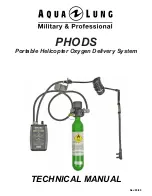
Brookfield Engineering Labs., Inc.
Page 29
Manual No. M13-167-A0415
The process of selecting a spindle and speed for an unknown fluid is normally trial and error.
An
appropriate selection will result in measurements made between 10-100 on the instrument %
torque scale.
There are two general rules that will help in the trial and error process:
1) Viscosity range is inversely proportional to the size of the spindle.
2) Viscosity range is inversely proportional to the rotational speed.
In other words: to measure high viscosity, choose a small spindle and/or a slow speed. If the chosen
spindle/speed results in a reading above 100%, then reduce the speed or choose a smaller spindle.
Experimentation may reveal that several spindle/speed combinations
will produce satisfactory results between 10-100%. When this
circumstance occurs, any of the spindles may be selected.
Non-Newtonian fluid behavior can result in the measured viscosity and
yield stress changing if the spindle and/or speed is changed. See our
publication, “More Solutions to Sticky Problems”, for more details.
When viscosity data must be compared, be sure to use the same
test methodology: namely the same instrument, spindle, speed,
container, temperature and test time.
DV3TLV Rheometers are provided with a set of four spindles and
a narrow guardleg; DV3TRV Rheometers come with a set of six
spindles and a wider guardleg; DV3THA and DV3THB Rheometers
come with a set of six spindles and
no guardleg
. (See Appendix G
for more information on the guardleg.)
The spindles are attached to the rheometer by screwing them onto
the coupling nut on the lower shaft (see Figure III-4). Note that the
spindles have a left-hand thread. The lower shaft should be secured
and slightly lifted with one hand while screwing the spindle to the
left. The face of the spindle nut and the matching surface on the
lower shaft should be smooth and clean to prevent eccentric rotation
of the spindle. Spindles can be identified by the number on the side
of the spindle coupling nut.
The motor should be OFF whenever
spindles are being removed or attached.
If your instrument has the EZ-Lock system, the spindles are attached
as follows:
With one hand hold the spindle, while gently raising the spring-
loaded outer sleeve to its highest position with the other hand, as
shown in Figure III-5. Insert the EZ-Lock Spindle Coupling so
that the bottom of the coupling is flush with the bottom of the shaft,
and lower the sleeve. The sleeve should easily slide back down to
hold the spindle/coupling assembly in place for use. [Spindles can
be identified by entry code; look for the number on the side of the
EZ-Lock spindle coupling.]
The motor should be OFF whenever
spindles are being removed or attached.
Note
: Keep the EZ-Lock Spindle Coupling and
outer sleeve as clean as possible and free
from debris that could become lodged
inside the adapter.
Figure III-5
Figure III-4
















































